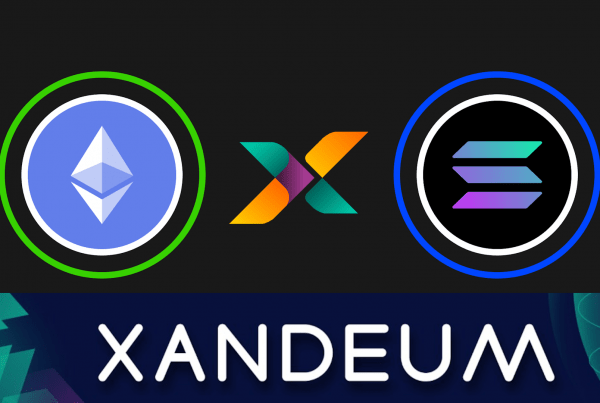
Key takeaways
- Helio Protocol’s $HAY is a “destablecoin” that aims to be the leading stablecoin in the BNB Chain ecosystem and beyond
- Helio Protocol places a strong emphasis on security, with smart contracts audited by top firms, a bug bounty program, and an emergency shutdown mechanism
- With its decentralized collateralization model, HAY offers higher capital efficiency and security compared to centralized stablecoins
Helio Protocol, supported by BNB Chain and described as a “destablecoin” instead of a stablecoin, has been implemented with a project that can change the paradigms of the USD-pegged coin industry. The goal of Helio Protocol is to make $HAY destablecoin the leading stablecoin of both BNB Chain and the entire industry. This open-source liquidity protocol enables using DeFi facilities such as lending and liquid staking with $HAY.
Helio Protocol’s vision is to enable users to access a stablecoin service that is sustainable, resilient to market sentiment, and offers actual returns. Bringing better decentralization, capital efficiency, and security to the stablecoin industry, Helio is poised to break the definition of industry. The “de” in the name “destablecoin” comes from the “de” of “decentralized finance”.
Aiming to be the most adopted stablecoin of BNB’s comprehensive ecosystem, HAY also made good use of the fact that BUSD, the most preferred stablecoin in this ecosystem, has been losing blood since November 2022. $HAY aims to expand to other significant blockchains in the future and increase community adoption.
Security of Helio Protocol and $HAY Destablecoin
While the security of a DeFi project directly affects the success of that project, security is even more critical, especially in a project that offers stablecoins within its protocol. Platforms often have their protocols and smart contracts audited by an audit firm. Helio Protocol, conversely, has its smart contracts audited by leading companies such as CertiK, PeckShield, SlowMist, and Veridise. Audit reports are available on the Helio website. Helio is also in talks with other reputable smart contract auditors.
Another method of providing security is the bug bounty program. Those who manage to find a vulnerability in the open-source Helio Protocol are generously rewarded. This allows the protocol to avoid potential errors quickly. Helio also includes an emergency shutdown mechanism as a last resort in case of possible abuse. This means that users’ assets will continue to be protected in the event of any cyberattack.
Helio Protocol applies the best risk parameters to solve the main problem in DeFi, which is the inability to provide user security and decentralization simultaneously. The project, which aims to create both a sustainable destablecoin and a large community, keeps security controls tight from the beginning.
Why BNB Chain?
$HAY’s existence, first and foremost in the BNB ecosystem, is due to the lack of a reliable decentralized stablecoin. The dev team carefully continued their development for both the Helio Protocol and $HAY after seeing some of the problems with stablecoins, which act as an essential bridge to crypto adoption.
What Makes Helio Protocol Unique?
Since $HAY is a BNB ecosystem product, the best competitors to compare it to are BUSD and VAI. It is obvious how centralized BUSD is that it has legal problems and errors in collateral. Regarding VAI, Helio also has higher capital efficiency and security as Helio Protocol is a more collateralized, therefore more liquid staking asset than VAI. Helio Protocol’s destablecoin product HAY is collateralized by decentralized assets such as BNB.
$HAY is also comparable to stablecoins on different blockchains. The largest decentralized stablecoin on the Ethereum blockchain is DAI. But DAI is also over-collateralized by USDC and similar centralized assets. This seriously lowers the level of decentralization that DAI offers. On the other hand, HAY is collateralized with decentralized assets, and HAY holders can have more opportunities to increase their capital efficiency through liquidity provision and staking methods.
How Does HAY Destablecoin Stay at $1?
The dev team thoroughly studied the different DeFi protocols before releasing the Helio Protocol and $HAY destablecoin. As a result of these analyses, an LTV rate of 66% was determined to ensure that HAY remains resistant. In other words, you can borrow 66 HAYs for 100 USD worth of BNB you have deposited in the protocol. Thanks to this over-collateralization, Helio always has enough BNB to pay off the debts.
The smart contract architecture of the decentralized stablecoin HAY is built to enable arbitrage incentives to keep the token at $1 USD. This means arbitrageurs can trade HAY on various DEXs to keep prices steady on any price divergence. Therefore, users can consider this an arbitrage opportunity if the price deviates between 1% and 2%, allowing the $1 price to be obtained again.
At the same time, HAY’s mint cap will never exceed 5% of BNB’s market cap. In other words, despite significant price drops in the market, there will always be enough BNB collateral in the protocol. Adopting a dual token model, the governance token $HELIO is used for proposing and voting in DAO governance.
The Bottom Line
With its new perspective on the stablecoin industry, Helio Protocol aims to increase both capital efficiency and decentralization. Striving to become the most adopted stablecoin product of the BNB ecosystem, HAY has steadily increased its market value since its launch in mid-2022. With a market cap of $41.5M by the end of February 2023, this token has excellent potential to continue increasing its adoption as it focuses on capital efficiency and absolute returns.



